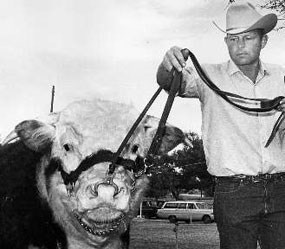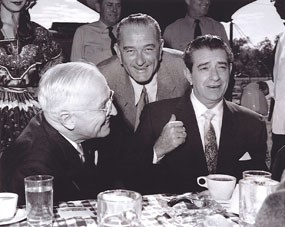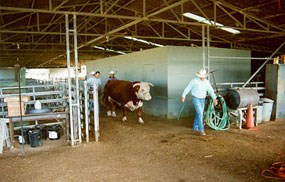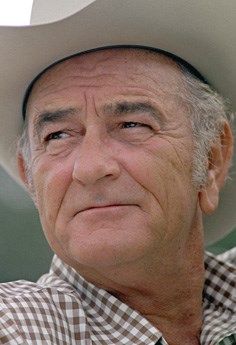
Photo by Laurence Parent As a teenager Lyndon Baines Johnson spent summers helping out on his Uncle Clarence Martin's cattle ranch along the Pedernales River. Johnson's attachment to this land was strong, having been born down the road on a farm which had originally been settled by his grandfather. Young Lyndon's fond memories of family gatherings at the Martin house and his daydreams of becoming a rancher were the genesis of his desires to one day own this piece of the Texas Hill Country. In 1951, Johnson's widowed aunt gave him that chance. In return for a lifetime right to Johnson's mother's house in Johnson City, Frank Martin gave her dilapidated 250 acre ranch to Senator Johnson. He soon began what became a continual series of improvements to the newly christened "LBJ Ranch". Not everyone was confident that Senator Johnson could become a successful rancher. When Johnson applied for a loan to purchase cattle, Percy Brigham, Blanco National Bank President reportedly told him, "Lyndon, if you want to just walk around in yellow cowboy boots and proclaim yourself a rancher, that's one thing. But if you intend to make money ranching, I hope you know something about cattle." But Johnson applied his prodigious energy and determination to creating a showcase 2,700 acre ranch, complete with 400 head of registered Hereford cattle. At the same time, he acquired the image of a western rancher and a place to recharge his batteries. Both of these contributions from the LBJ Ranch would be invaluable as he entered the harsh spotlight of national politics. 

No tour would be complete without a drive through the center of the Show Barn to admire the prizewinning Hereford cattle. Registered Herefords sold for breeding purposes constituted a large portion of a rancher's income, and stock shows played a large part in determining the worth of select animals.

The Show Barn was a symbol of Johnson's increasing sophistication. The center for Johnson's early ranching operation was the Martin barn near the main ranch house. With cattle operations located so close to the main house, guests would often watch, and, more often than not, interfere with the ranch work. Mrs. Johnson did not relish the thought of someone getting hurt and she did not particularly care for the smells and noises of the nearby cattle. To alleviate his wife's concerns, President Johnson moved his cattle operation in 1966 to a new Show Barn about a mile north of the house.

Returning home to retire in 1969, Johnson continued to draw strength and solace from this ranch along the Pedernales River. His desire to leave a legacy of his accomplishment and to demonstrate the cultural and conservation practices associated with ranching prompted President and Mrs. Johnson to donate a portion of the LBJ Ranch to be added to the newly established Lyndon B. Johnson National Historic Site. Johnson stipulated to park planners that the LBJ Ranch remain a working ranch, and not a "sterile relic of the past." To that end, the National Park Service maintains a herd of Hereford cattle descended Johnson's registered herd and manages the ranch lands as a living demonstration of ranching the LBJ way. |
Last updated: December 23, 2024
